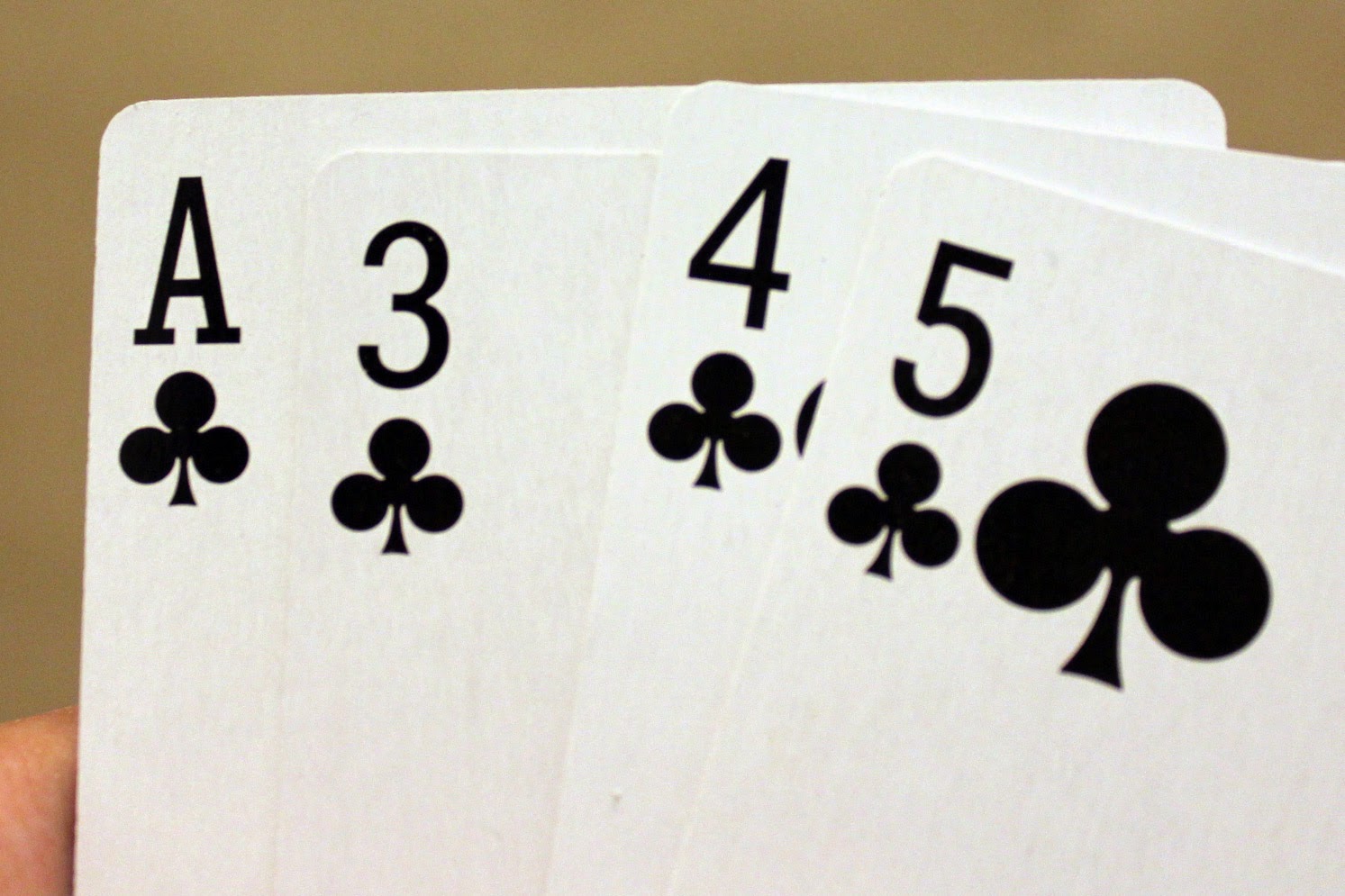Exploring a Card Mechanism: Gapped Straight Scores

I play No Thanks a lot. (Probably two or three times a week.) It never gets old for me. There are slightly more meaty variations on the mechanism in Lascaux. I also enjoy other just-numbers card games like Pairs and 6 Nimmt! Still, it's hard to match the elegant brinksmanship and risk-taking that Thorsten Gimmler packed into such a tiny package.
But because I like those games so much, I still toy with the occasional abstract card game mechanism. Here's one such notion.
Straight Scoring
First, assume a game in which playing straights are the primary method of scoring points.
Second, your straight must contain at least X cards, where X is some number determined by other game mechanisms. For now, let's assume it's 3. You need at least 3 cards of the same suit to play a straight.
Third, your score is the total of all ranks in your straight. Just add up the numbers, that's your score. So 1-2-3 scores you 6 points. 1-2-3-4 scores you 10 points.
Gapped Straight Scoring
Finally, the twist: You may play straights with gaps. That is, straights where one or more cards are missing from the numerical sequence. However, there is a penalty: If you play a gapped straight, your score is reduced by the amount of cards missing.
For example, the straight shown at the top of this post is 1-3-4-5. The base score for this is 13 points, but because one card is missing, you score 12 points. If you played 1-3-5, the base score would be 9 points, with a 2 point penalty for the missing "2" and "4" card, for a total score of 7.
Cutthroat Gapped Straight Scoring
For a more cutthroat variant, you might make the penalty equal to the actual missing rank in the straight.
For example, 1-3-4-5 would have a 2 point penalty, for a total score of 10 points. 1-3-5 would have a 2 point and 4 point penalty, for a total score of 3 points.
Personally, I like this variant, but it would require strong incentives to play sub-optimal straights. Achievements are a pretty standard tool for this task.
For example, the first player to play a straight of three cards might get a "three-card" achievement marker. Such an achievement marker may be available for each suit, for straights of up to 5 cards in length.
Once earned, these achievements could not be stolen from another player. Thus, the rewards of the achievements might be off-set by the penalties incurred for sub-optimal straights used to earn those achievements.
Or perhaps you can steal an achievement from another player, but you must play a higher straight than the achievement. So, to steal a "3 heart achievement" marker from another player, you'd need to play a heart straight with 4 or more cards. This might be a viable option if the "4 heart achievement" marker has already been earned by another player.
Mixed Straight Scoring
One last note, there might be some option to play straights with mixed suits. This might have further penalties, but I think there are enough penalties in this current setup. Too much subtraction is daunting. Instead, I think they should be played as-is, especially since they can be used offensively against opponents to remove critical connectors in their own straights. Of course, a mixed straight won't earn an achievement, but that's the tradeoff for making an easier straight.
Where Next...
So this is a lot of discussion about scoring, but very little about how cards are acquired. I find acquisition to be the more critical aspect of any card game.
- Draw? On your turn, draw a random card from the deck or play whatever straight you can.
- Deal? Deal a river to the center of the table and a hand to each player, then make it a poker-like bluffing game.
- Draft? Deal a hand of cards to each player, each picks one and passes the rest of the hand to the player on their left until each player has a full hand of drafted cards.
- Trade? Deal a whole hand to each player, then pass one card to the player on your left and right, tichu-style.
- Auction? Deal a river to the center of the table. Deal a large hand to each player. Then players can bid cards from their hand to buy a card from the river.
And don't even get me started on the potential for this with a triangular deck from 12 Days and Pairs.
Comments
Post a Comment